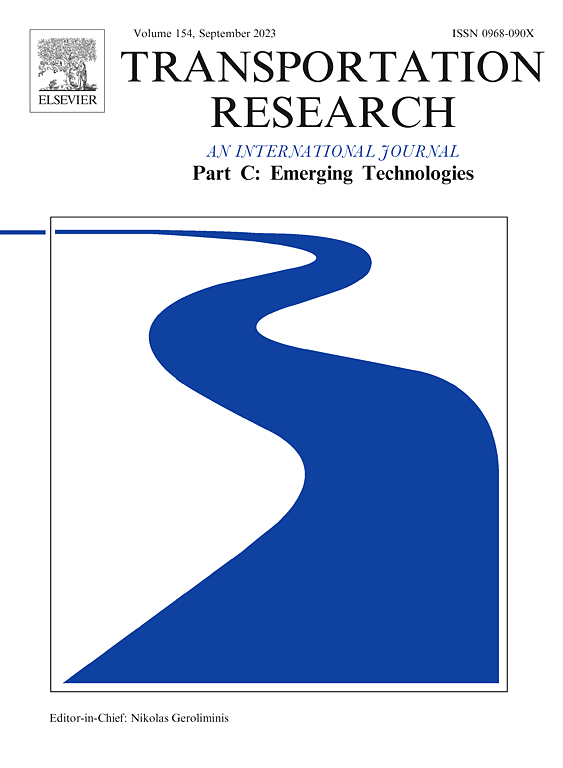An integrated multi-objective model for demand-capacity balancing and strategic de-confliction under autonomous aircraft flight
IF 7.6
1区 工程技术
Q1 TRANSPORTATION SCIENCE & TECHNOLOGY
Transportation Research Part C-Emerging Technologies
Pub Date : 2025-03-27
DOI:10.1016/j.trc.2025.105102
引用次数: 0
Abstract
To support the continued growth of the air transportation industry, Air Traffic Management (ATM) systems are evolving towards Trajectory Based Operations (TBO). Under TBO, ATM components at different levels transcend traditional spatial–temporal boundaries and become interdependent; and the capability of autonomous aircraft flight is developed and integrated into ATM systems. However, these components have been addressed in isolation, and trajectory uncertainty under autonomous aircraft flight has not been fully considered. In this paper, we first consider the impact of trajectory uncertainty on strategic de-confliction under autonomous aircraft flight, present a conflict detection approach and associated concepts for modeling trajectory conflicts to ensure the robustness of strategic de-confliction. Next, we propose a multi-objective integer programming model for tactical planning in high-density en-route airspace. This model synchronizes demand-capacity balancing and strategic de-confliction, while simultaneously optimizing the three key ATM performance metrics: the operating cost of airspace users, the service cost of air navigation service provider and the number of trajectory conflicts. This multi-objective model is solved using an exact tri-objective integer programming algorithm. We conduct several sets of stochastic numerical experiments in a high-density, complex en-route airspace to test the robustness, performance benefits and computational efficiency of the proposed approach. The results demonstrate that this approach ensures the robustness of strategic de-confliction under autonomous aircraft flight in an environment with wind disturbances. It also simultaneously enhances the optimized performance metrics, yielding considerable potential benefits. Additionally, about 20 Pareto-optimal solutions can be obtained within 10 min. Finally, we analyze the interactions between these performance metrics and derive valuable managerial insights.
求助全文
约1分钟内获得全文
求助全文
来源期刊
CiteScore
15.80
自引率
12.00%
发文量
332
审稿时长
64 days
期刊介绍:
Transportation Research: Part C (TR_C) is dedicated to showcasing high-quality, scholarly research that delves into the development, applications, and implications of transportation systems and emerging technologies. Our focus lies not solely on individual technologies, but rather on their broader implications for the planning, design, operation, control, maintenance, and rehabilitation of transportation systems, services, and components. In essence, the intellectual core of the journal revolves around the transportation aspect rather than the technology itself. We actively encourage the integration of quantitative methods from diverse fields such as operations research, control systems, complex networks, computer science, and artificial intelligence. Join us in exploring the intersection of transportation systems and emerging technologies to drive innovation and progress in the field.

 求助内容:
求助内容: 应助结果提醒方式:
应助结果提醒方式:


